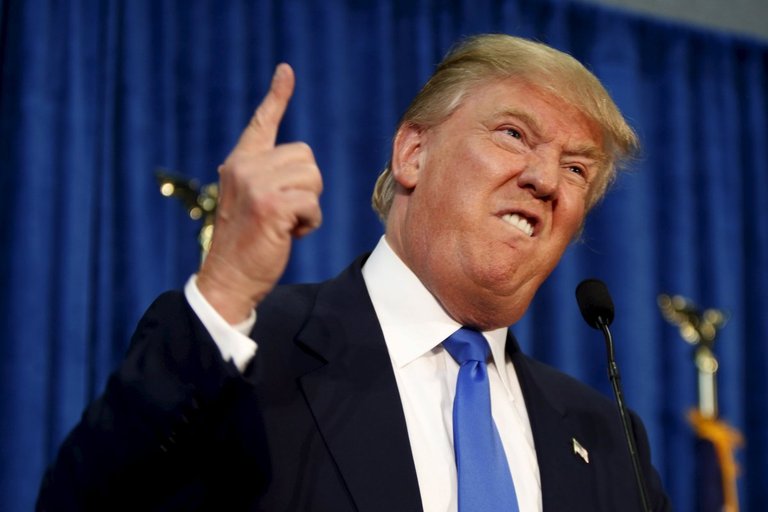Is Trump Secretly Engineering a Market Dip to Save the Economy? Here's the Untold Playbook.
In the world of finance and politics, there’s always more than meets the eye. While the media may latch onto Trump’s off-the-cuff comments or controversial policies, beneath the surface could be a calculated strategy—a bold move involving the stock market, interest rates, and America’s massive national debt. It sounds like a conspiracy theory, but take a closer look and the puzzle pieces start to fit.
Let’s start with something most people don’t realize: when the stock market starts to wobble, it doesn’t necessarily signal doom. For sophisticated players, and perhaps even certain politicians, a drop in stock prices can actually be a tool. A sharp decline—say, around 20%—spooks investors. As fear sets in, people start pulling money out of equities and move their assets into safer harbors. That’s usually U.S. Treasury bonds. They're boring, stable, and backed by the full faith and credit of the United States government.

Now here’s where it gets interesting. As more investors pile into bonds, the demand for them rises. And when demand for bonds increases, their yields (or interest rates) fall. Why does that matter? Because bond yields heavily influence broader interest rates across the economy. Mortgage rates, credit cards, business loans—they're all tied to that baseline. So when yields drop, borrowing becomes cheaper. And when borrowing is cheap, it becomes much easier for the government to refinance its towering pile of debt.
Trump, who spent a good chunk of his presidency publicly criticizing the Federal Reserve for keeping rates too high, knows this dynamic well. If the market takes a hit and panic sets in, the Federal Reserve is almost forced to respond by cutting interest rates to prevent a broader economic slowdown. That’s not just good for households—it’s a strategic win for a government trying to save billions on interest payments.
And there’s more.
Trump has long been an advocate of reshoring American industry. His weapon of choice? Tariffs. By placing stiff import taxes on goods from countries like China or Mexico, he makes it more expensive for companies to operate abroad. The logic is simple: if it costs more to import goods, why not just produce them in the U.S. and avoid the tariffs altogether?
This carrot-and-stick approach forces multinational companies to rethink their manufacturing strategies. For some, building factories in Ohio or Pennsylvania starts to look more appealing than continuing operations in Shenzhen or Monterrey. It may cause some short-term volatility, but in the long game, Trump is trying to tilt the playing field back in favor of American labor.
Naturally, foreign governments don’t take these moves lying down. They retaliate with tariffs of their own, often targeting politically sensitive sectors—like U.S. agriculture. But here’s where another unintended (or perhaps intentional) consequence comes into play: if U.S. farmers can’t export as easily, they end up selling more of their produce locally. Increased supply in domestic markets drives prices down. That translates into cheaper groceries for American consumers, easing some of the financial pressure on everyday families.
Now, here’s the kicker: the stock market is not America. Yes, it’s a vital part of the economy, but the vast majority of shares are held by a tiny fraction of the population. Roughly 94% of stocks are owned by the wealthiest 8% of Americans. So when the market takes a dive, it disproportionately impacts the rich. For the average citizen who owns little to no stock, a correction in the markets may barely register—especially if it leads to lower interest rates, cheaper food, and more local jobs.
All the while, Trump continues to keep the markets off-balance with unpredictable tariff announcements. One day it’s a 25% tariff on Mexican imports; the next day, it’s withdrawn without explanation. These mixed signals cause confusion and unease among investors. But again, this fear often drives money away from risky assets like stocks and into the comforting arms of U.S. government bonds. Which, in turn, keeps rates low.
So what may appear like chaos could actually be a high-stakes game of financial chess.
Of course, none of this is ever explicitly stated. No one’s going to go on record saying they want the market to tank—especially not a political figure. But look at the pattern: provoke just enough uncertainty to move markets without triggering full-scale collapse. Lower rates, encourage domestic production, keep the economy humming under the radar.
Is it a dangerous game? Absolutely. A 20% dip in the markets isn’t minor—it shakes retirement portfolios, creates political backlash, and stirs media panic. But for a leader who thrives on bold, counterintuitive moves, it might be worth the gamble.
In the end, this isn’t about sabotage—it’s about control. The ability to influence not just the economy, but the very levers that shape how capital flows through it. And whether you love him or hate him, Trump’s playbook continues to defy convention in ways most people never see coming.
Posted Using INLEO